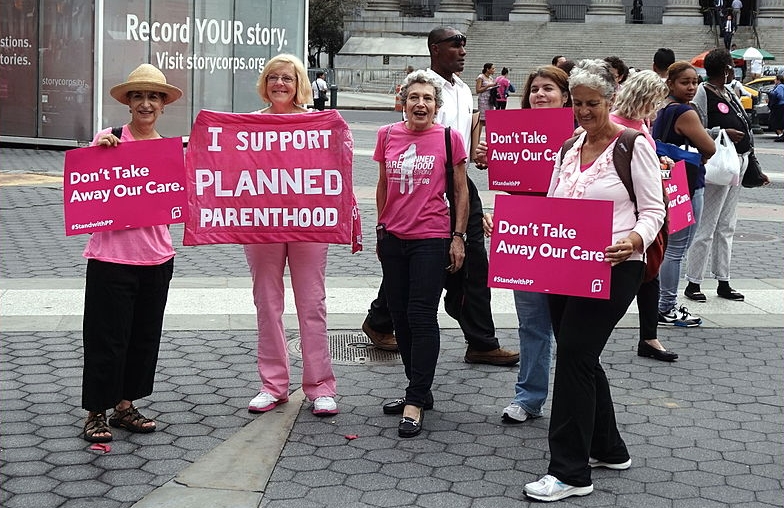Think fake news is bad? Take a look at the even larger problem of fake medical research
07/21/2017 / By JD Heyes

Following the 2016 presidential election, far-Left journalists, Democrats and #nevertrump Deep State operatives invented a number of excuses as to why the “shoo-in” candidate, Hillary Clinton, really lost to GOP nominee Donald J. Trump.
The Russians “hacked” the election. Trump “colluded” with Moscow to “steal” it. And Kremlin-planted fake news helped sway voters away from President Obama’s heir-apparent and towards the carnival barker and former reality TV star.
The Washington Post led with the Russia-planted fake news narrative, claiming in a late November story that Moscow’s intelligence service was planting anti-Hillary stories in more than 200 alternative and independent news sites as a way of undermining her candidacy. The story was so full of holes that other Left-wing media sites criticized it. Eventually, the paper was forced to print a sort-of, kind-of retraction, as Natural News founder/editor Mike Adams (whose site was listed as one of those pushing fake anti-Clinton news, compliments of Vladimir Putin) pointed out.
What’s interesting is what happened next: The Washington Post was accused of publishing “fake news,” which was followed by scores of additional fake news from other establishment media outlets like The New York Times and CNN. Other false narratives were also relentlessly pushed, as reported by the Washington Times, via MediaFactWatch.com.
But, much worse, even, than filling Americans’ heads with false narratives and fake news stories is the fact that the so-called scientific community’s research on a wide range of topics is also bogus. As The Waking Times reports:
As the world confronts the realization that mainstream media organizations are the primary source of fake news and corporate propaganda in our world, more information continues to come to light indicating that much of mainstream science and medical research is also largely fraudulent.
What’s more, this is not a new phenomenon. [RELATED: FAKE SCIENCE on parade as exact opposite news headlines appear right next to each other, citing the exact same study.]
In 2015, Richard Horton, editor of the prestigious medical journal, The Lancet, noted, “The case against science is straightforward: Much of the scientific literature, perhaps half, may simply be untrue. Afflicted by studies with small sample sizes, tiny effects, invalid exploratory analyses, and flagrant conflicts of interest, together with an obsession for pursuing fashionable trends of dubious importance, science has taken a turn towards darkness.”
Dr. Marcia Angell, former editor of another prestigious medical publication, The New England Journal of Medicine, also observed, “It is simply no longer possible to believe much of the clinical research that is published, or to rely on the judgment of trusted physicians or authoritative medical guidelines. I take no pleasure in this conclusion, which I reached slowly and reluctantly over my two decades as editor” of the magazine.
Carlton Gyles, writing for the Canadian Veterinary Journal observed:
Marcia Angell’s comments were directed largely against conflicts of interest and the biases introduced by the influence of drug companies on researchers and universities. Richard Horton’s statement was part of his comments on a recent symposium on reliability and reproducibility of research in the biomedical sciences and addresses a broader area of concern. Some of the problems he identified are seen in the veterinary literature. They include inadequate number of subjects in the study, poor study design, and potential conflicts of interest. He notes that the quest for journal impact factor is fuelling competition for publication in a few high reputation journals. He warns that “our love of ‘significance’ pollutes the literature with many a statistical fairy-tale” and he remarks that journal editors, reviewers, and granting bodies all stress original studies to the extent that “we reject important confirmations.”
For years, the scientific and medical communities have been increasingly scrutinized for churning out faulty science. In fact, as The Waking Times pointed out, Horton has warned that as much as 80 percent of research in support of Big Pharma marketing may be fake.
The fraud now seems even more pervasive and widespread. Investigative journalist, Sharyl Attkisson, host of Full Measure, examined this problem in a recent report, in which she began with an interview of Harvard University’s Angell, a pioneer in the industry of medical journals, though today she is extremely critical of the state of her industry.
“I think physicians and the public have come to believe that drugs are much better and much safer than they really are,” she said, adding that the current level of scientific corruption was not always the norm.
Angell said it all began to change “as the pharmaceutical industry became richer, more powerful, more influential, and began to take over the sponsorship of probably most clinical research.”
Other skeptical scientists and researchers agreed.
“One always has to be aware of the possibility that somebody who is an author or co-author, or someone who is consulted to help support the research was a paid consultant by the pharmaceutical industry, and that’s not always apparent,” noted Dr. Howard Pomeranz, a neuro-opthalmologist at the Hofstra Northwell School of Medicine.
J.D. Heyes is a senior writer for NaturalNews.com and NewsTarget.com, as well as editor of The National Sentinel.
Sources include:
Tagged Under: Big Pharma, fabricated studies, faulty studies, medical journals, medical research, phony research



















